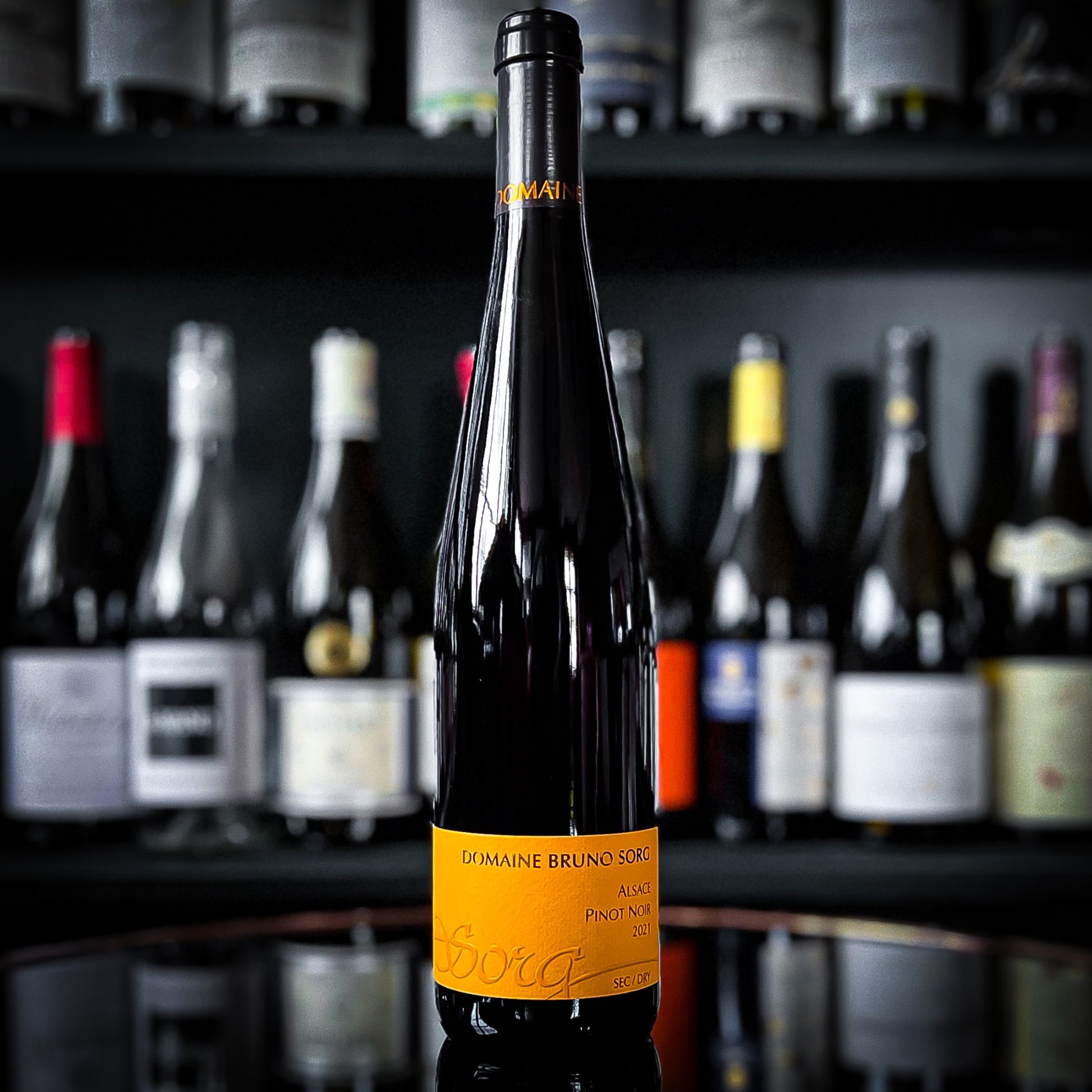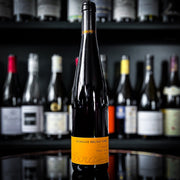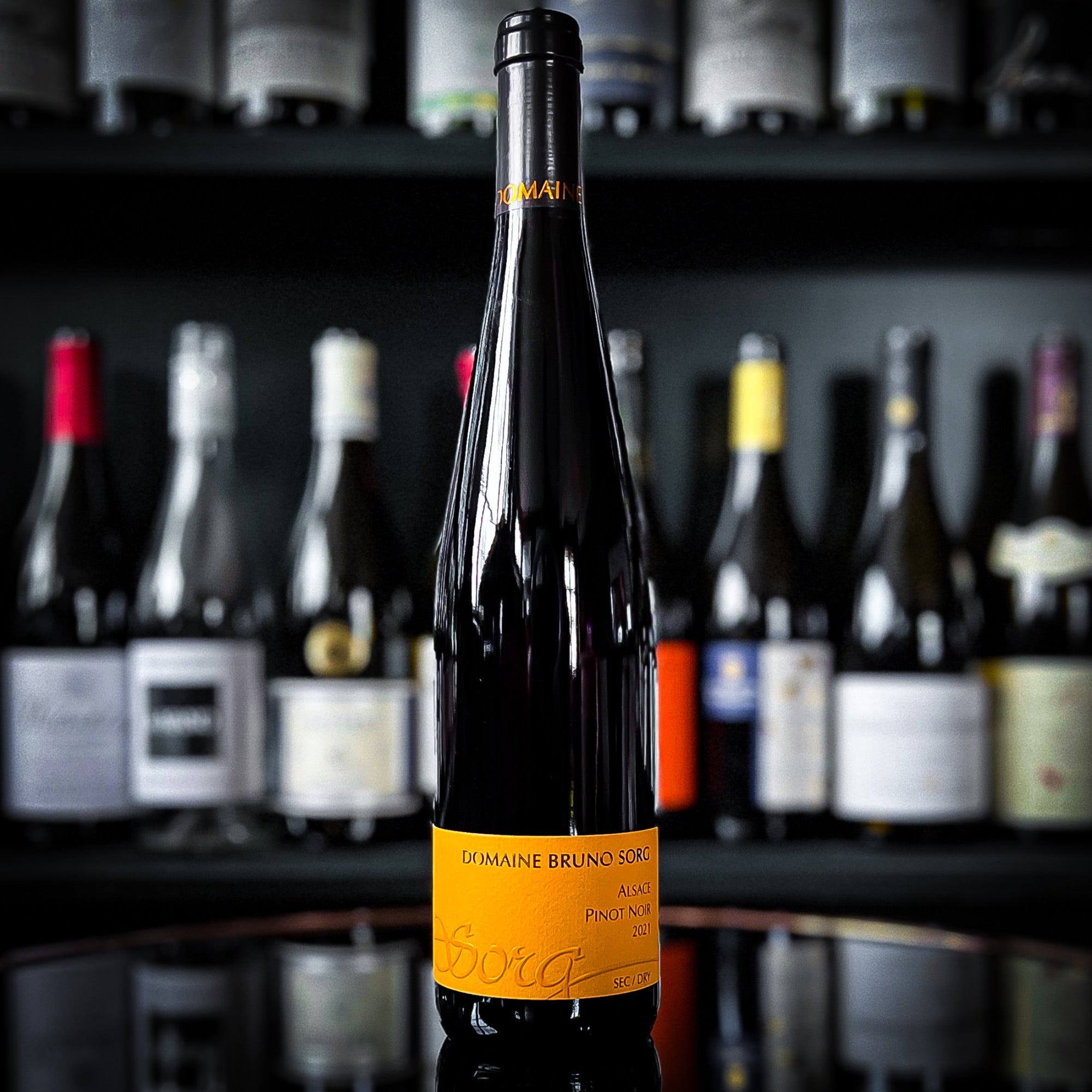Bruno Sorg Pinot Noir
Bruno Sorg Pinot Noir
2023
A fresh and vibrant Alsatian Pinot Noir.
Out of stock
Couldn't load pickup availability
From parcels on vineyards of genuine Grand Cru calibre, this standout Pinot Noir showcases one of Alsace’s leading family-run domaines. The 2021 is poised and precise: lifted notes of red cherry, wild berries and rose drift into a sleek palate framed by silk-sheen tannins, savoury nuance and a chiselled mineral line that speaks of its privileged soils. Expect sophistication and balance—Burgundian grace with unmistakably Alsatian character—at a price that seriously overdelivers.
Domaine Bruno Sorg is the source of some of the finest, richest and most concentrated wines in Alsace. This Pinot Noir toes the fine balance of being serious yet easy drinking. Super fruity, with cherries, blackberries and red berries on the nose, let yourself sink into its palate of soft tannins and crunchy acidity.
Producer: Bruno Sorg
Producer: Bruno Sorg
Region: Alsace
Region: Alsace
Grape: Pinot Noir
Grape: Pinot Noir
Pinot Noir
Delivery information
UK Mainland
- - England & Wales: Free standard delivery on orders over £150
- - England & Wales: £10.99 standard delivery on orders below £150
- - England & Wales: Saturday delivery is £24.99.
- - Scotland: Standard delivery from £13.99 but this is dependant upon the shipping postcode
- - Scotland: Standard delivery is subsidised on orders over £150
- - Scotland Saturday delivery from £28.99 but this is dependant upon the shipping postcode.
Local delivery
- - We offer free local delivery to GL50, GL51, GL52, GL53 and GL54 on orders over £100.
- - £5.99 on orders below £100.
- - Saturday delivery is £24.99.
UK Non-Mainland (Islands & Highlands)
- - Delivery costs will vary. Please enter your postcode at the checkout to calculate.
- - We are currently unable to deliver to Northern Ireland.
Delivery Times
- - Standard delivery within 5 business days (Monday to Friday)
- - In most cases, if orders are made before 12pm, we will endeavour (with our delivery partner) to deliver the next working day.
Terms & Conditions
- - Tivoli Wines or our delivery partner will notify you by way of email and/or SMS when your goods are to be dispatched to you. The message will contain details of estimated delivery times in addition to any reasons for a delay in the delivery of the Goods purchased by you.
- - If Tivoli Wines receives no communication from you, within 14 days of delivery, regarding any problems with the Goods, you are deemed to have received the Goods in full working order and with no problems.
- - Free delivery qualifies for orders meeting the minimum order value and within the Mainland UK. Non-wine items do not qualify towards the free delivery minimum order value. Should your order change for any reason resulting in the total order value falling below the minimum order value, you may be required to pay an additional fee for delivery.
- - Additional charges may apply to orders outside of mainland UK (e.g. the Scottish Isles, Isle of Wight, Northern Ireland, Scottish Highlands, Channel Islands) or outside the United Kingdom.
- - All goods must be signed for on delivery by an adult aged 18 years or over.
- - If our carrier is unable to deliver your order, it will be returned to us and an additional charge may required for redelivery.
- - Tivoli Wines, nor its chosen carrier, can be held responsible for the security of your order if specific instructions are left for the carrier in your absence or inability to take delivery.
- - Please read our full Terms and Conditions regarding orders and delivery.




